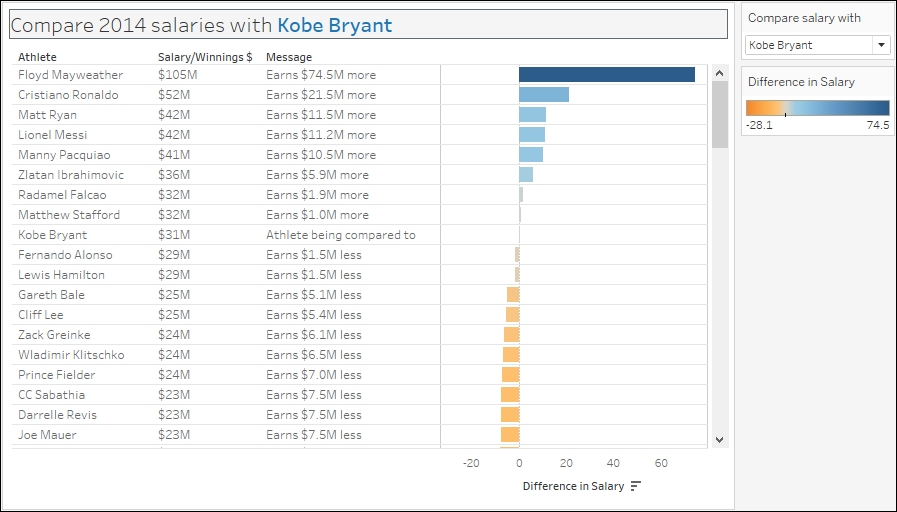In this recipe, we will create a bar chart that shows how much more or less other athletes earned compared to a selected athlete.

To follow this recipe, open B05527_03 – STARTER.twbx. Use the worksheet called Compare one against everything else and connect to the Top Athlete Salaries (Global Sport Finances) data source.

The following are the steps to create a chart that allows a selected item to be compared with all other items in the view:
Right-click the arrow beside the Dimensions section in the sidebar, and select Create Parameter.
Create a string parameter called
Compare salary withthe following settings:
Click on the Add from Field button, choose the data source Top Athlete Salaries (Global Sport Finances), and then select Athlete.

Click on OK when done.
Show the parameter control for Compare salary with. You can do this by right-clicking on the parameter, and selecting Show Parameter Control.



